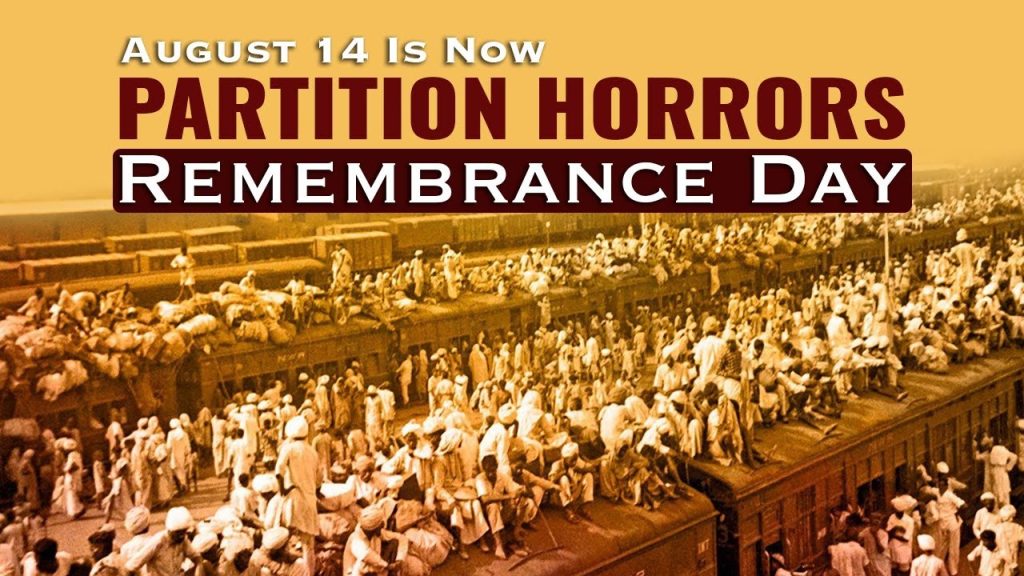
Prime Minister Narendra Modi on Wednesday paid tribute to those who lost their lives during the partition of the country on the occasion of Partition Vibhishika Smriti Diwas. He said that on this day he also reiterates his commitment to protect the bond of unity and brotherhood in the nation. He posted on X, ‘On Partition Vibhishika Smriti Diwas, we remember the countless people who were affected and suffered due to the horrors of Partition.’
Partition Horrors Remembrance Day started in 2021
In the year 2021, during his second term, PM Modi had announced to celebrate 14th August every year as Partition Horrors Remembrance Day. Regarding this special day being celebrated for the third consecutive year, questions still arise among the common people that what was happening on 14th August 1947, a day before the independence of the country on 15th August 1947? Let us try to know about it in detail.
Freedom struggle from 10 May 1857 to 15 August 1947
On one hand, the dream of the revolutionaries and freedom fighters who sacrificed everything in the freedom struggle that began on 10 May 1857 and ended on 15 August 1947 was coming true. There was happiness in the country on achieving independence, while on the other hand, everyone was saddened by the incidents of India’s partition and the horrific bloodshed. The uncontrollable crowd of looted Hindu and Sikh refugees coming in trains from Pakistan was continuously increasing in Delhi. Communal tension was at its peak. Government efforts for peace were proving unsuccessful.
The very painful partition of India before independence
The Indian Independence Act 1947, presented in the British Parliament on 4 July 1947, was approved on 18 July 1947 after a debate. On this basis, India was partitioned on 14 August 1947 and crores of Indians had to bear the brunt of partition. According to statistics, about 10 lakh people were killed in communal violence during the partition of India. At the same time, about 1.46 crore people had to become homeless. Incidents of rape of more than 50 thousand women were reported.
An eyewitness account of the ill effects of the partition of India
Historian Alan Campbell-Johanson has written in his article on the partition of India that in the largest religion-based displacement in human history, the normal life of about 10 crore people in two big states of India, Punjab and Bengal, was badly ruined. In this article written just five days after independence, Alan Campbell-Johanson has given the figure of two lakh people being in refugee camps. Seeing their hellish conditions, the author was afraid that a cholera epidemic might spread and kill thousands of people.
Historical background and process of partition of India
According to historians, the entire background of the partition of India was prepared on 20 February 1947 itself. The then British Prime Minister Clement Attlee had announced in the House of Commons that his government would hand over local power to Indian leaders before 30 June 1948. However, Lord Mountbatten completed this entire process a year before the set deadline. Mountbatten returned from London to New Delhi on 31 May 1947 with the approval of the transfer of power.
Almost unanimous on the independence and partition of India
After this, in the historic meeting held on June 2, 1947, almost a consensus was reached on both the issues of India’s independence and partition. After this, in the historic press conference held on June 4, 1947, Mountbatten announced to hand over the power of India to Indian leaders a year before the time decided by the British government. The biggest question asked in this press conference was related to the migration and displacement of common people on a large scale during the partition of India.
However, giving evasive answers to the questions, Lord Mountbatten fixed the date of 14/15 August for the independence and partition of India. To implement this sudden decision, the British Parliament finally had to pass the Indian Independence Act 1947 on 18 July.
The last Viceroy bowed before Indian astrologers
This has been explained in detail in the Hindi translation of Dominique Lapierre and Larry Collins’ book ‘Freedom at Midnight’ titled ‘Aadhi Raat Ko Azadi’. They have written why India was declared an independent nation at midnight on 14 August, a day before 15 August. Why did Mountbatten have to announce the partition of the country and the creation of Pakistan? The book states that ‘Viceroy Lord Louis Mountbatten had to bow to the insistence of Indian astrologers.’
‘If anyone smells British rule, don’t talk like that’
After calculating the positions of the planets and stars, the astrologers had said that 14th August was a better time than 15th August. Lord Mountbatten, the last Viceroy of Britain, who was made the first Governor General of independent India, had entrusted his young press advisor Alan Campbell-Johanson with the responsibility of consulting astrologers on these important issues along with many other responsibilities. Mountbatten strictly warned all his subordinates that no such thing should be spoken to any Indian which may even by mistake give them a whiff of British rule.
The tricolour was hoisted after the Union Jack was taken down
Dominic Lapierre and Larry Collins, while describing the historic day of 14 August 1947 in their book, write- ‘The Union Jack flying on military cantonments, government offices, private houses etc. had started being taken down. When the sun set on 14 August, the Union Jack left the flag-staff across the country, so that it could quietly become a thing of the past in Indian history. The Sabha Bhawan was fully ready for the ceremony at midnight. In the room where the magnificent oil-paintings of the Viceroys of India used to hang, many tricolour flags were now fluttering proudly.’
Celebrations of independence have begun in every city and village of the country
He further wrote about this, “From the morning of 14th August 1947, the celebration of independence had started in every city and village of the country. The residents of Delhi came out of their homes. People started moving towards the centre of Delhi i.e. India Gate on bicycles, cars, buses, rickshaws, horse-drawn carriages, bullock carts, and even elephants and horses. People were dancing and singing, congratulating each other and the tune of the national anthem was being heard everywhere.”
 Lucknow Press
Lucknow Press
